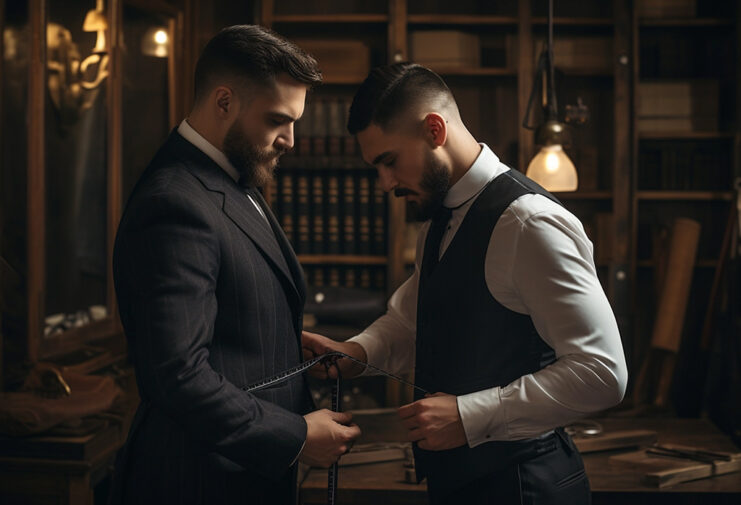The enemy of Great is not Bad, but “good enough”.
When we settle, we miss the opportunity to achieve greatness.
In today's article – I'm breaking down the difference between Average and Awesome when it comes to shirts.
1. How Does This Shirt Make You FEEL?
You don't know the value of a shirt until you know how it makes you feel. Why? Check out the style equation of value:
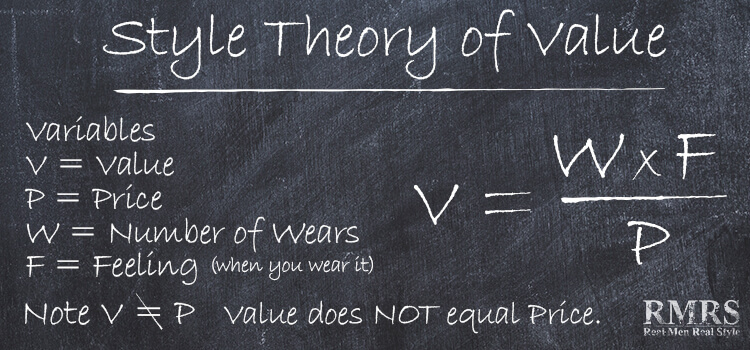
The value of a piece of clothing equals the number of wears you get out of it, MULTIPLIED by the way it makes you feel, DIVIDED by the price.
Let's break that down. Say you own a shirt that cost you $20 – but it makes you feel lousy (say a 2/10) and so you only wear it 5 times before shoving it to the back of your closet.
The value of that shirt is 5×2/20 = 0.5.
Now let's suppose you splash out $200 on a shirt that makes you feel 10/10. You love it and you wear it about 200 times before it finally falls apart.
The value of that shirt is 200×10/200 = 10.
Sure, it cost 10x as much as the first one – but its VALUE was 20x as much. And that's why buying cheap for cheap's sake is a waste of your money.
#2. Dress Shirt Collar Fit
Want to look like a pencil neck? Or like a throttled balloon? No? Then you need to know the basics of collar fit.
The collar of your dress shirt has one main job – to frame your face. It's visible even when you're wearing a jacket. Without a well-fitted collar, you end up with a noticeably unbalanced outfit.
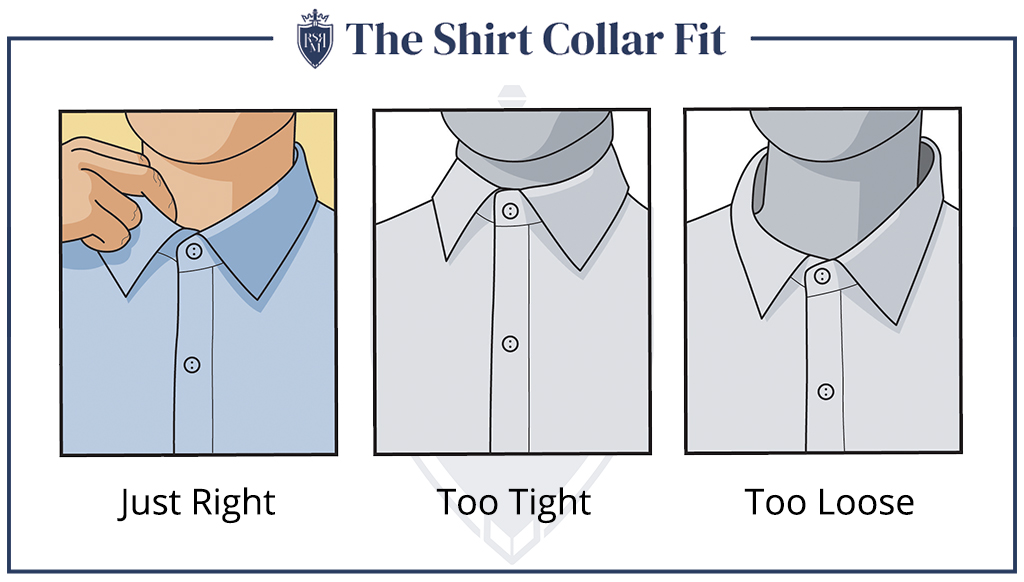
Too Tight: The collar is close enough to actually pinch the skin underneath. It's uncomfortable, and impossible to place a finger between the neck and collar without stretching or tugging.
Too Loose: The collar doesn't touch the neck – it rests on the whole area surrounding it, almost like the collar of a coat that was lazily hung up. There's also a gap that's large enough to squeeze in about 4 fingers.
Just Right: The collar touches the skin all the way around the neck – but doesn't press against it. You're able to slip 2 fingers comfortably in between your neck and the collar at any point.
3. Sleeve Length
Why is this so high up the list? Because if the sleeves are too short, you don't want to buy the shirt. If they're too long, you can have a tailor take the cuff off, shorten the sleeve, and reattach it. It's a bit of an expensive fix but very doable.
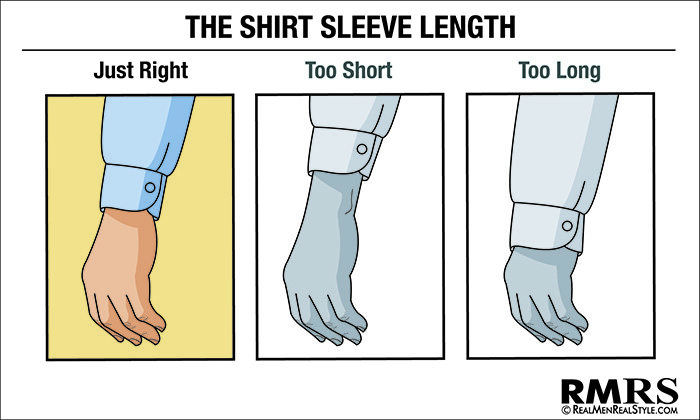
If the cuff hits any higher than the top of your wristbone, the sleeves are too short.
4. Dress Shirt Cuff Fit
This one is high on the list because you can't hide it. Similar to the collar, when worn under a jacket about half an inch of cuff should be shown, assuming that the sleeve length is correct.
The cuff can be loosened or tightened by moving the button. You want it tight enough that you can't take your hand out without unbuttoning it.
5. Dress Shirt Armscye Size
The size of the armscye (armhole) is important for several reasons. Firstly, armscyes are very difficult to adjust – it can be done, but you'll almost be rebuilding the shirt.
Secondly, a smaller armhole gives you more freedom of movement – it actually makes it easier for your arms to move. Most off-the-rack manufacturers use a larger armscye so that their shirts will fit a wider range of body types.
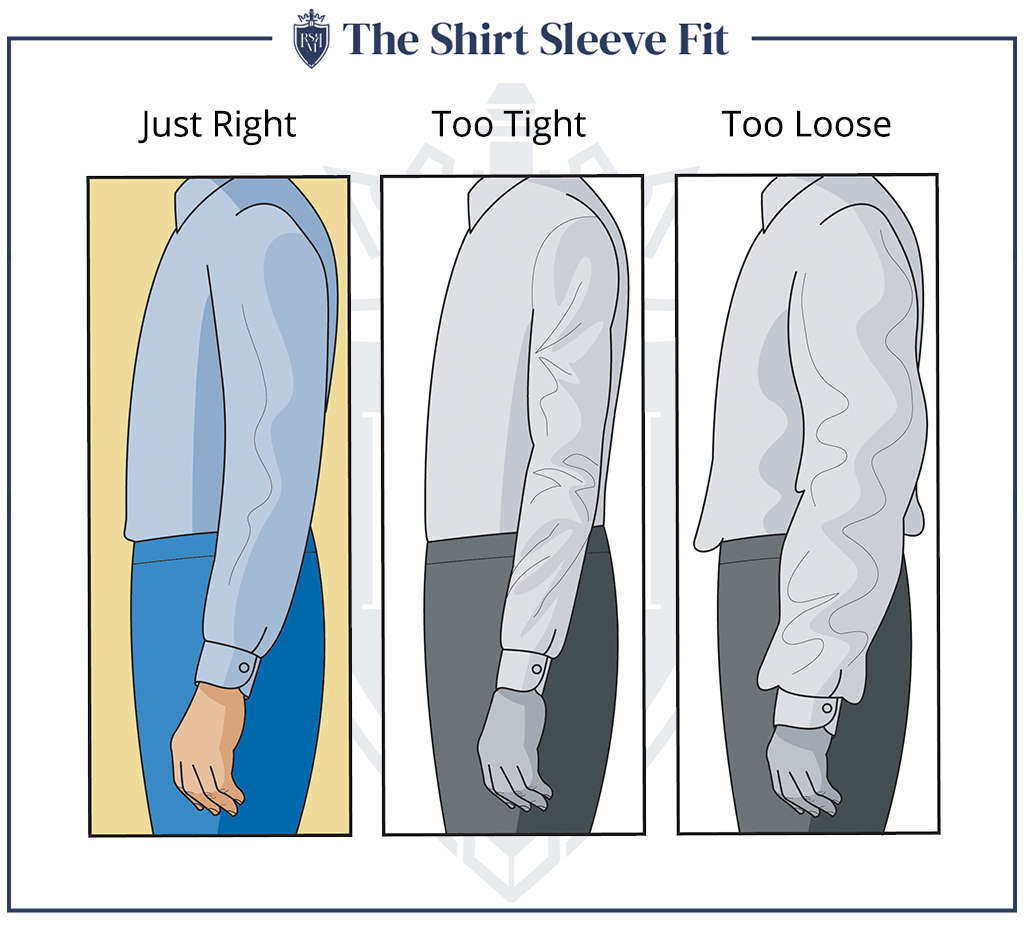
The width of the armscye also dictates the width of the sleeve – so if you're a skinny guy and you buy off the rack, you're likely to have wide sleeves flapping around making you look like you have toothpick arms.
6. Dress Shirt Chest Fit
You need to be able to breathe easily in your shirt without the buttons opening up at the front. If the buttons gape, don't buy the shirt – it's too small.
If a shirt is too BIG in the chest, you can have a tailor take it in by about 1.5-2″ (this depends on the size of the man – if you have a 50″ chest you're going to be able to take it in more than if you have a 35″ chest.
7. Dress Shirt Stomach Fit
This is similar to the chest, but you can take it in a bit more than 2″. The belly of a shirt should never be too tight, but it can be adjusted.
8. Dress Shirt Length
You know a shirt is too short if it comes untucked when you raise your arms.
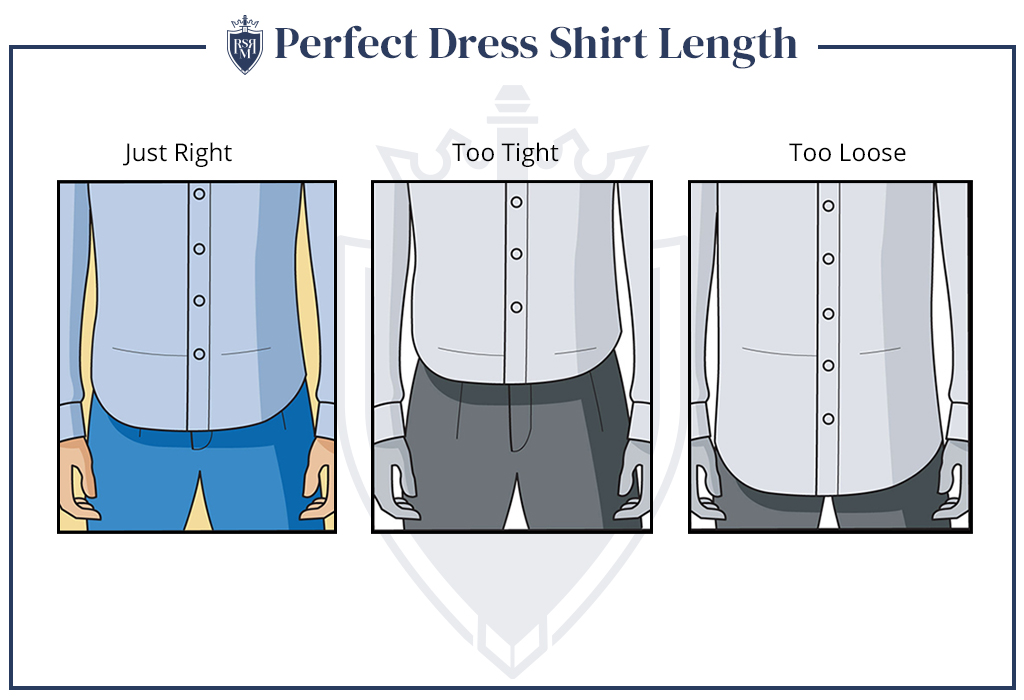
Knowing when a shirt is too long is trickier – it depends on your height and proportions. If you want to wear it untucked it should hang about 2″ below the beltline. If you want to tuck it, it should hang down 3-4″ to enable it to stay tucked. You can also use the material from the bottom hem to rebuild a collar or a cuff if you need to later.
9. Dress Shirt Fabric Types
Cotton is king for a number of reasons. First, history – it's been used successfully for thousands of years because it's durable and tough. The vast majority of top mills out there are spending their money, time, and research building their fabrics from cotton.
There are great shirts out there made from linen, wool, silk, or even synthetics. But when you're looking at shirts in those materials, you need to understand WHY they're using that material rather than cotton. Maybe it has better moisture wicking or insulating properties or adds a bit of stretch.
But the vast majority of high-quality shirts out there are made from 100% cotton.
Cotton is made up of fibers from the cotton plant, or staples. In general, the longer the staple, the higher quality it's going to be.

Cotton manufacturers take these raw fibers, clean and strengthen them, and develop them into slivers. Again, longer strands are higher quality.
Next they take these slivers, wrap them around each other, and dye them to create yarn.
This yarn is then spun into high-quality fabrics.
Every step of that 4-step process can be done to a high quality standard or it can be done cheaply. If you consistently choose high quality it's really going to push up the cost of the fabric, and that's why shirt fabrics can be so expensive.
10. Dress Shirt Patterns
Less than 1% people know this trick to spot a quality shirt. If it's a patterned shirt, look at one of the seams, like the shoulder seam, and see if the patterns match up. It may not be possible to match them up perfectly, especially when the fabric is placed at an angle, but you'll be able to see if someone's tried.
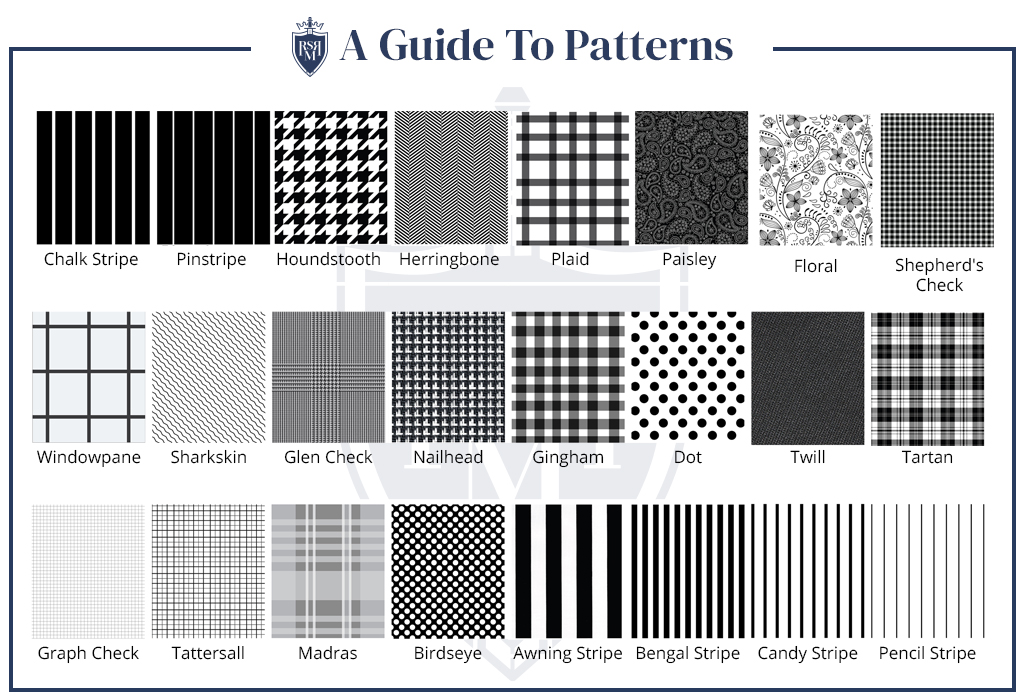
Why is this a sign of quality? Because it takes time, effort, and money.
If they've paid attention to pattern matching, they've probably paid attention to other details too.
Patterns on quality dress shirts will be classic and look proportional. A lot of cheaper shirts try to imitate this but the proportions will look slightly off.
11. Dress Shirt Build Quality
The first clue to build quality is stitches per inch. An easy place to measure this is on the collar.
A quality dress shirt will have about 16 stitches per inch.
14 or 12 are OK, but below that it's likely to fall apart faster.
This is because stitches per inch tell you how fast the sewing machine was moving. More stitches per inch take more time and effort but produce a more durable shirt.
12. Dress Shirt Button Type
I prefer mother of pearl buttons. These used to be very popular until certain detergents appeared in the 1930s and 40s that destroyed mother of pearl. Mother of pearl is so tough that it will break sewing needles.
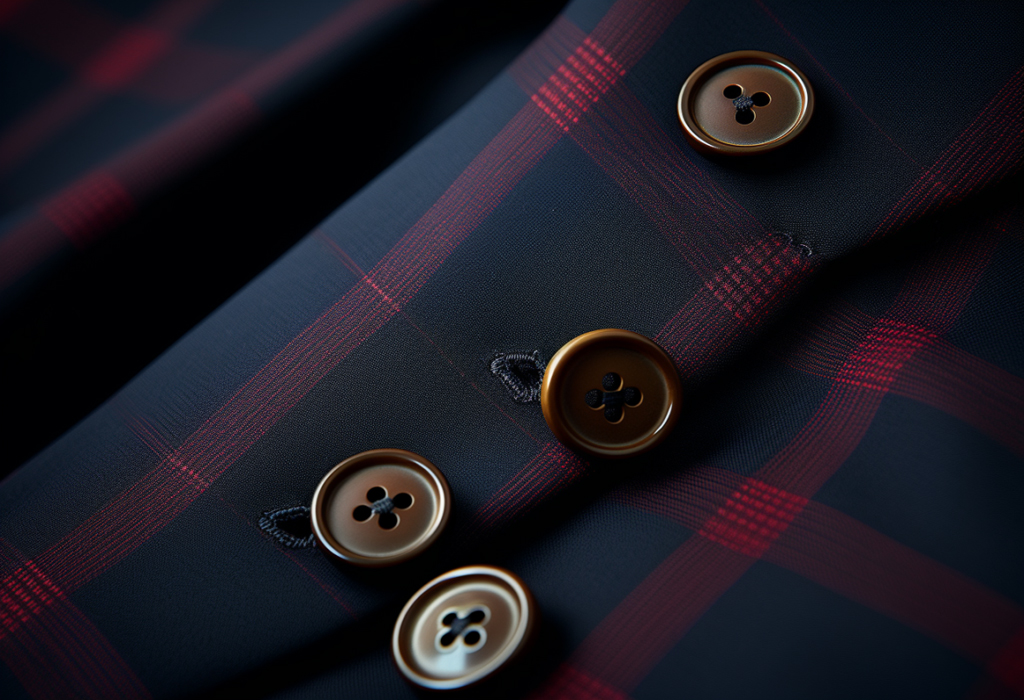
However, it's very expensive these days, so not all companies will use it. A company that doesn't offer mother of pearl buttons isn't necessarily a bad company, but if a custom manufacturer offers this as an option, it's probably a sign of quality.
13. Dress Shirt Pockets
A lot of off-the-rack shirts come with side pockets. I prefer my shirts without – it's a more streamlined look.
If there is a pocket, look at the way it's sewn on and make sure it's done with a quality stitch, 14-16 stitches per inch, and if it's got patterns make sure they match the patterns.
14. Dress Shirt Monograms
Do you need a monogram on the cuff or bottom hem for it to be a quality shirt? The answer is no. When I first got into custom shirts, I got monograms on all of my shirts – but then I learned the history and realized it was just for sorting laundry.
If you want a monogram – go for it – but realize this is not the sign of a high quality shirt.
15. Dress Shirt Function
What you're looking for here is things that work together – for instance, if you've got a casual collar style such as a button-down or band collar you should have a casual cuff and placket style (a covered placket, where you can't see the buttons, is more casual).

If there's a big contrast there, it's probably a low-quality shirt designed by someone who doesn't know what they're doing.
16. Collar Stays
On a high-end shirt, if there's a turn-down collar, there should be room to insert collar stays (also known as collar bones) or they should be already sewn in so you don't have to worry about it.
17. Gauntlet Button
You know that gap in the sleeve above your cuff? A quality dress shirt will have a button to hold that gap closed, called a gauntlet button.
